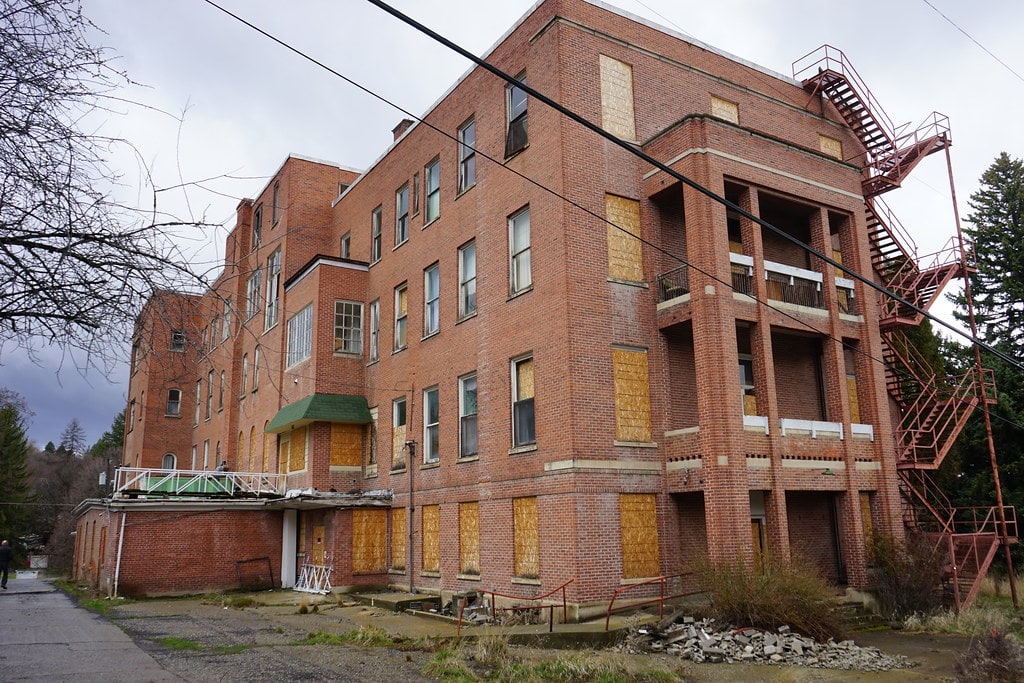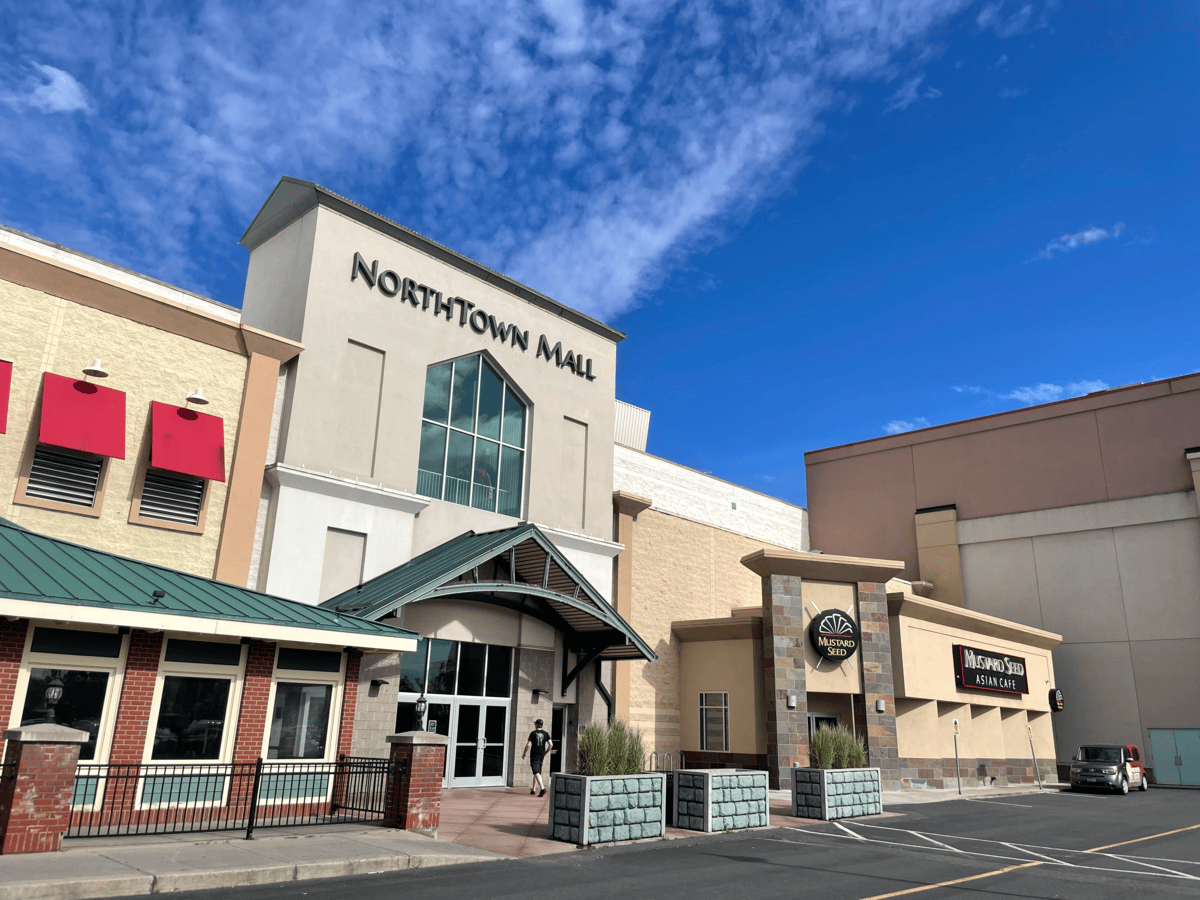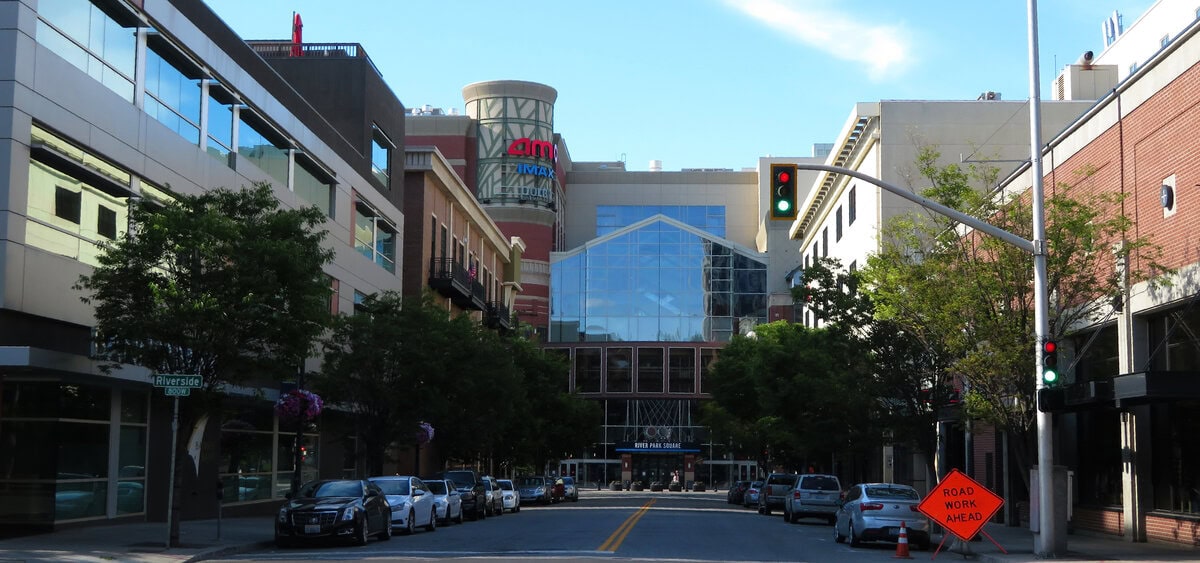A brick building on Hospital Hill in Colfax, Washington, has been turning heads for over a century.
Tall windows, rust-colored masonry, and a roofline that still carries weight. It's quiet now, but it wasn't always.
What started as a Catholic hospital built by the Sisters of Providence in the 1890s has gone through more than one kind of transformation.
People pass by and ask questions. What's going on inside? Why are people lining up for tours after dark? Is it really haunted? Maybe.
But before any of that, before the legends and the locked doors, St. Ignatius Hospital ran as a regional lifeline.
It helped shape Whitman County's healthcare story long before federal grants or modern equipment changed the field.
The story starts in 1892, but even now, it hasn't quite ended.
Groundbreaking and First Patients
In 1892, the Sisters of Providence made a decision.
They'd build a hospital in Colfax to serve the growing population of farmers, railroad workers, and families across Whitman County.
The cornerstone was set in June 1893, and by the following year, St. Ignatius Hospital had opened its doors.
It was the first hospital in the area and one of the earliest Catholic medical facilities in Washington State.
The brick structure cost roughly $20,000 - a sizable sum in the 1890s.
Early press described it as one of the best-equipped facilities in the Pacific Northwest.
Inside, it offered basic surgical services, private rooms, and charity beds - a leap for a town of Colfax's size.
Records show that within the first eighteen months, 145 people were treated at the hospital.
Of those, 84 received support through county funding.
Ten stayed under charity care. The rest paid their way, except one - a case billed to the railroad.
By modern standards, these aren't big numbers, but for the time and place, they marked the beginning of a shift in rural healthcare access.
The hospital's first cesarean section took place in February 1915.
The baby weighed ten and a half pounds.
Both mother and daughter survived - a quiet milestone, but an early sign of what kind of work was being done inside the building.
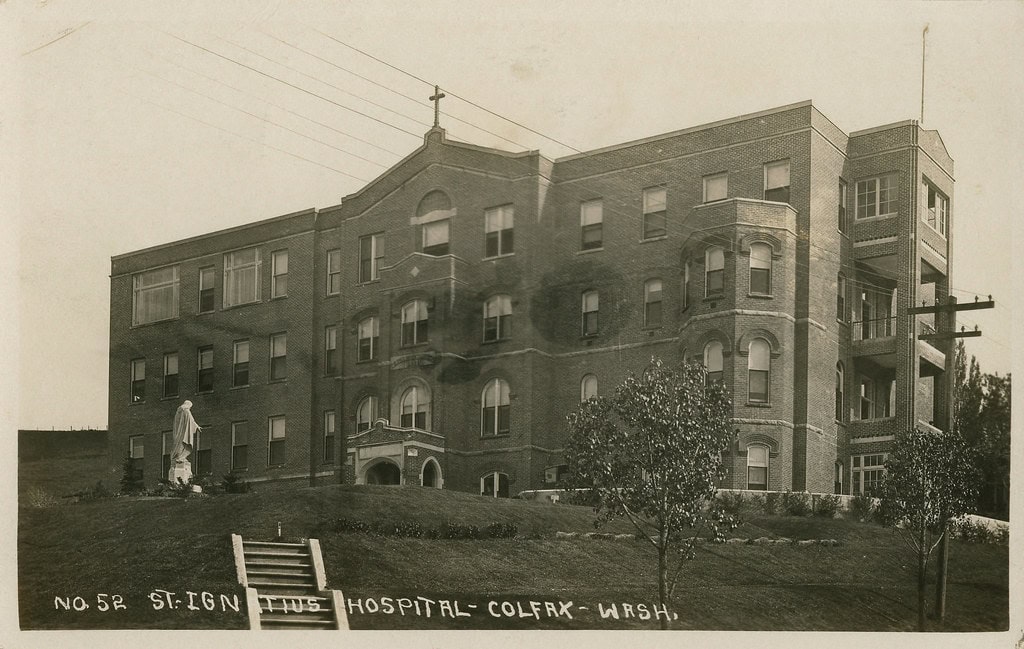
Expansion, Upgrades, and Real Estate Add-Ons
By the early 1900s, the original building had done its job, but it was time to grow.
In 1908, the hospital reached a point where it could cover its expenses.
That financial breathing room allowed the Sisters of Providence to think ahead.
More patients were coming in, and the town around them was getting busier.
Plans for an expansion started taking shape.
They added a laundry building, installed an elevator, and began drawing blueprints for a new east wing, which was completed in 1917.
It cost about $17,500, and for that amount, they got more space, more beds, and a floor layout designed to separate surgery, patient care, and living quarters.
By then, the hospital had four floors. Patient rooms filled the second and third.
The fourth was a mix of surgical areas, sleeping quarters for nurses, and a chapel tucked into the northeast corner.
That chapel stayed in use for decades, even after operations wound down.
In 1928, another expansion followed. This time, the west wing balanced out the building's shape and gave it the footprint it still has today.
A heating plant was added east of the structure to support the growing energy demand.
A year later, in 1929, they upgraded the kitchen with new refrigeration units - practical additions that helped keep up with changing codes and rising patient volumes.
These improvements were paid for through a mix of religious support, private donations, and what the hospital could save.
Each physical change marked a new chapter - one that matched the city's slow growth during the early 20th century.
By the time the Great Depression began, St. Ignatius Hospital was firmly rooted, both as a hospital and as a local fixture that had expanded right alongside Colfax.
Funding Gaps and a Forced Exit
By 1964, the hospital had a problem. It wasn't about staffing or patient numbers. The building itself was aging out of compliance.
That year, Washington's health department told administrators that they would lose their operating license unless they completely rebuilt the facility.
There wasn't enough cash on hand to cover that kind of overhaul.
The projected cost came to $1.2 million - money the Sisters couldn't raise alone.
In response, the town set up a hospital board and began looking for funding wherever it could be found.
By 1965, a federal Hill-Burton grant brought in $400,000.
Local clubs, churches, and organizations collected another $600,000.
The last $150,000 came from selling off the old hospital's equipment.
Piece by piece, St. Ignatius Hospital helped fund its replacement.
Construction moved quickly. In November 1968, the new Whitman Community Hospital opened.
To mark the occasion, a book was placed in the lobby.
It listed 2,700 names - everyone who'd donated, worked, or helped build the new facility.
Once the transition was complete, the original hospital closed.
But it didn't sit empty. It became an assisted living home and remained in operation for the next three decades. That second life ended in 2000.
In 2003, the building was shut down for good. There were no more nurses in the halls, and no more operations.
No more plans for upgrades. What remained was a four-story structure - quiet again but still there.
And eventually, it would draw attention for reasons the Sisters probably never imagined.
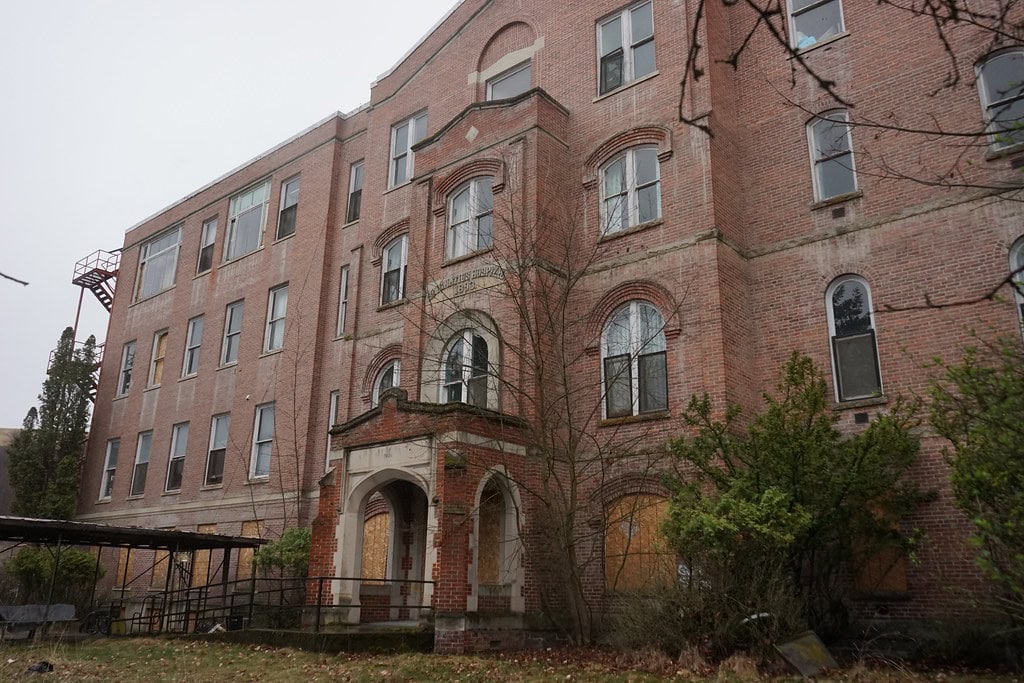
Revenue, Repairs, and Tour-Based Recovery
After two decades of vacancy, the building on Hospital Hill found another use.
In 2015, St. Ignatius Hospital opened to the public again - this time for tours.
What drew people wasn't medicine. It was curiosity, history, and, increasingly, ghost stories.
The Colfax Chamber of Commerce handled the early tours.
Between 2015 and 2016, the site brought in over $30,000, all of which went back into maintenance and stabilization.
The focus was practical: keep the building standing, make it safe enough to enter, and use the interest to build a case for long-term preservation.
In early 2021, ownership changed hands. New owners purchased the property with plans to balance tourism and repair work.
They developed a three-phase approach: first, stabilize the structure; second, carry out preservation work; third, look at possible new uses for the space.
A new roof was installed in October 2024, marking the first major construction improvement since the building's closure in 2003.
The money came from tour revenue and private support, with no large grants in play.
Since 2015, the hospital has been regularly featured on the Washington Trust for Historic Preservation's "Most Endangered Places" list.
That listing brought some visibility, but it didn't come with funding.
Most of the restoration work has relied on the local economy and steady visitor interest.
Tours have expanded in style and scope. There are daytime history tours, evening ghost walks, and full overnight stays for those who book in advance.
All of these serve a dual purpose: they fund the repairs and keep the story in circulation.
The building isn't being flipped or gutted. It's being kept upright - slowly - by the people who pay to walk through its halls.
TV Crews, Ghost Files, and Repeat Visitors
Stories about the hospital's past aren't limited to charts or blueprints anymore.
Since 2017, St. Ignatius Hospital has become a familiar name to fans of paranormal media.
That year, the TV series Paranormal Lockdown filmed an episode on-site.
A few months later, Ghost Adventures arrived to do the same.
The attention sparked more bookings. Visitors came from across the region for ghost tours - some out of belief, others out of curiosity.
The rooms with the most reported activity include the old surgery floor, the nuns' quarters, and the main kitchen.
People describe hearing voices, feeling cold spots, and seeing flickers of movement in empty hallways.
In 2022, the YouTube series Ghost Files, produced by Watcher, featured two episodes on St. Ignatius Hospital.
The episodes drew high view counts and were widely shared.
The format - mixing skepticism with investigation - brought a new kind of audience to the hospital.
The most frequently cited paranormal clip was recorded during one of these visits.
A static camera picked up what sounded like a child speaking to a woman.
The area had been cleared before filming, and no one else was in the building at the time.
The ghost stories haven't faded, and neither has interest.
The hospital remains closed for medical use but open for those willing to pay and spend a few hours - sometimes overnight - looking for something they can't quite explain.
Whether it's belief, entertainment, or a mix of both, the draw is strong enough to keep people coming back.
